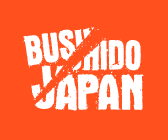THE DO IN BUDO IS THE WAY
The martial arts born from the combat techniques of the Samurai follow various ways, such as Judo, Kendo, and Aikido. The essence of martial arts is to walk a single way, building upon daily training, in pursuit of enlightenment.
Kendo
Kendo descended from the swordsmanship practiced by samurai. It is martial art most associated with Samurai culture. Bushido, meaning “The Way of The Warrior”, is a moral code of chivalry which governed the philosophies and practices of samurai culture. Modern Kendo utilizes bamboo swords, and is practiced under a formal rule system.
Judo
Judo was derived as a unification of Jujutsu, making efficient use of both mental and physical energy. Judo is comprised of throwing and grappling for one-on-one sparring. The name Judo means “Gentle Way”, it incorporates methods of using opponent’s energy against them, whereby a smaller Judoka can overcome a larger and stronger opponent.
Iaido
Iaido is another martial art of swordsmanship, distinct from Kendo, which focuses on smooth and controlled movements. You will learn the art of drawing a sword from sitting position, slashing, and sheathing your sword, with perfect form. Rather than attacking your opponent, you compete for proper proper flow of movements and etiquette.
Aikido
Jujutsu can hurt the opponent with joints, chokes, throws, etc., but when the word “Aiki” is used, it becomes completely different. The moment you touch the opponent, you synchronize and neutralize with the other person. The fundamental principal is redirecting an attacker’s momentum, allowing one to overcome a stronger opponent.
Karatedo
Karate, meaning “Empty Hand”, is a world-renowned striking martial art originated in Okinawa. Fighting with fists and legs, Karate is based on kata (demonstration of proper form), as well as sparring with an opponent. Although flashy techniques have been romanticized in pop culture, we emphasize proper manners and etiquette.
Kobudo
There are two categories of kobudo; Nihon No Kobudo which refers to mainland Japanese martial arts, such as kenjutsu, jujutsu, naginatajutsu & etc. The other category is Ryukyu Kobudo which originated from Okinawa. People trained in secret and learned to use everyday tools as weapons when Satsuma Samurai occupied Okinawa.
Sumodo
Sumo is Japan’s national sport, and nearly as old as the country itself. In Shinto, Japan’s native religion, Sumo has been regarded as a ritual to pray for good harvest. Sumo is a form of full-contact wrestling where victory is determined by forcing an opponent out of the ring or onto the ground.
Chado
Chado commonly refers to Japanese tea ceremony. The host aims to serve the guest an unforgettable bowl of tea, and the guest responds with thankfulness. Both of them realize that it is a ‘once in a lifetime’ occasion. Preparing a bowl of tea has a calming effect, and is also considered a path to self-spiritual awakening.
Yabusame
Yabusame is a traditional form of mounted archery, where an archer shoots at targets while riding on a horse. It is traditionally performed as a Shinto ceremonial ritual. Yabusame was also a valued aspect of samurai culture, where being selected as a Yabusame archer was a great honor. Today, Yabusame has also taken on a sporting aspect.
Katana
Katana is the word for “sword”, a single edged curved steel weapon, amazingly strong and sharp used by warriors of feudal Japan. It is made by forging and folding steel called tamahagane. The Katana was a decorative piece of art as well as a weapon, consisting of beautiful artistic fittings.
Kyudo
Kyudo is the martial art of archery. The bow is one of Japan’s oldest weapons, with images of Japanese longbows dating back to 500BCE – 300 CE. It is important that one demonstrates beautiful form in technique, from holding the bow, drawing the arrow, shooting, and lowering the bow. Spiritual practice is also an essential aspect of Kyudo.
